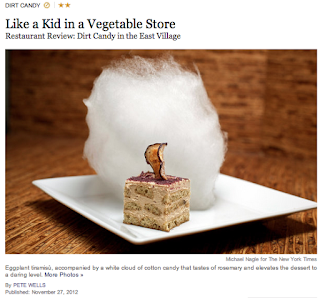The realm of what is known is ever-growing; technology is advancing, exciting medications are being developed, and new fundamental particles are being discovered. With this vast amount of new knowledge being produced, how can an individual stay up to date with the most exciting scientific news? One such way is by reading Popular Science, a magazine dedicated to bringing scientific news and innovations to the general public. Popular Science has been around for more than a hundred years, and over the course of its long history, it has run stories ranging from rocket science to biology and medicine. A recent article, an excerpt from the work of Dr. Seth Horowitz, explores the possibility of creating a sound based weapon to cause peoples’ heads to explode. Despite the somewhat fantastic subject, the article is grounded in science and works to educate readers. In order to both educate and entertain the reader, the text effectively balances scientific fact with journalistic creative style through the use of analogy, humor, and a conversational tone.
The
author’s use of analogy keeps the article educational by helping readers to
understand the scientific concepts presented in the article that they may be
unfamiliar with. An analogy is basically
a simile that goes beyond mere imagery and actually shows conceptual similarity
between two things. If readers didn’t
have any background knowledge on the concepts the author tries to bring up, the
information presented in the article won’t mean anything to the audience. The use of analogies greatly increases an
author’s ability to convey abstract concepts to their readers, which is why Dr.
Horowitz would include it in his article.
This is one analogy he uses in the text:
“The problem is that while your skull may vibrate
maximally at those frequencies, it is surrounded by soft wet muscular and
connective tissue and filled with gloppy brains and blood that do not resonate
at those frequencies and thus damp out the resonant vibration like a rug placed
in front of your stereo speakers.”
The comparison of dampening of the skull’s
resonance by flesh with a rug over stereo speakers is something that the
majority of the readers of Popular Science could understand. By relaying this concept to the readers, the
author keeps the text educational through the use of a creative analogy.
The
article discusses scientific myths about sonic weapons being able to affect
humans with explosive results, but instead of explaining the scientific basis
for these ideas in a strictly academic manner, the author uses humor to make
the article more interesting. An example
of this can be seen in this section of the text:
“In fact, when a living human head was
substituted for a dry skull in the same study, the 12 kHz resonance peak was 70
dB lower, with the strongest resonance now at about 200Hz, and even that was 30
dB lower than the highest resonance of the dry skull. You would probably have
to use something on the order of a 240 dB source to get the head to resonate
destructively, and at that point it would be much faster to just hit the person
over the head with the emitter and be done with it. So while we still cannot
use infrasound to defend ourselves against dangerous severed heads and have not
found the "brown sound"
that would allow us to embarrass our friends, infrasound can cause potentially
dangerous effects on living bodies—as long as you have a very high-powered
pneumatic displacement source or operate in a very contained environment for a
long time.”
The author incorporates numbers and facts, but also
includes humor in his writing. Mixing in
humor among the cold data not only keeps the reader interested, but also helps
the reader to grasp what the information means.
This use of scientific data combined with creative humor keeps an
effective balance between education and entertainment for the reader.
Further
support for an effective balance can be found in the author’s use of plain
language to throughout the article. The author uses a conversational tone to
convey the findings of scientific research without overcomplicating the
language. This article has an average of 11th grade reading level,
which is an accessible level for the magazine’s target audience, individuals
who have working knowledge of scientific concepts. The blend of conversational tone and
scientific facts can be seen in this excerpt:
“For example, imagine I am a mad scientist (a
total stretch, I know) who wants to build a weapon using sound to make people’s
heads explode. Resonance frequencies of human skulls have been calculated as
part of studies looking at bone conduction for certain types of hearing aid
devices. A dry (i.e., removed from the body and on a table) human skull has
prominent acoustic resonances at about 9 and 12kHz, slightly lesser ones at 14
and 17kHz, and even smaller ones at 32 and 38kHz. These are convenient sounds
because I won’t have to lug around a really big emitter for low frequencies,
and most of them are not ultrasonic, so I don’t have to worry about smearing
gel on the skull to get it to blow up.”
By employing this tone when discussing the scientific
data in the article, the information is much less dense, making the article
easier to read and keeping a balance between education and entertainment.
The
educational and entertainment success of Dr. Horowitz’s article discussing
current scientific findings are brought about by his effective use of analogy,
humor, and conversational tone. However,
my examination of Dr. Horowitz’s work and the articles found in Popular Science
as a whole is rather limited. Further
questions might be addressed, such as if articles in Popular Science generally
include the same plain language “shell” wrapped around pieces of concrete
scientific language found here, or perhaps if
scientists in the field actually view Popular Science as an accurate
reporter of current findings. In the end, Popular Science is a source of entertainment
and through its broad range of articles and topics, effectively entertains its
audience and keeps them coming back for more of what they love: science.
You can read the full article here.
---John E. Yeakel










